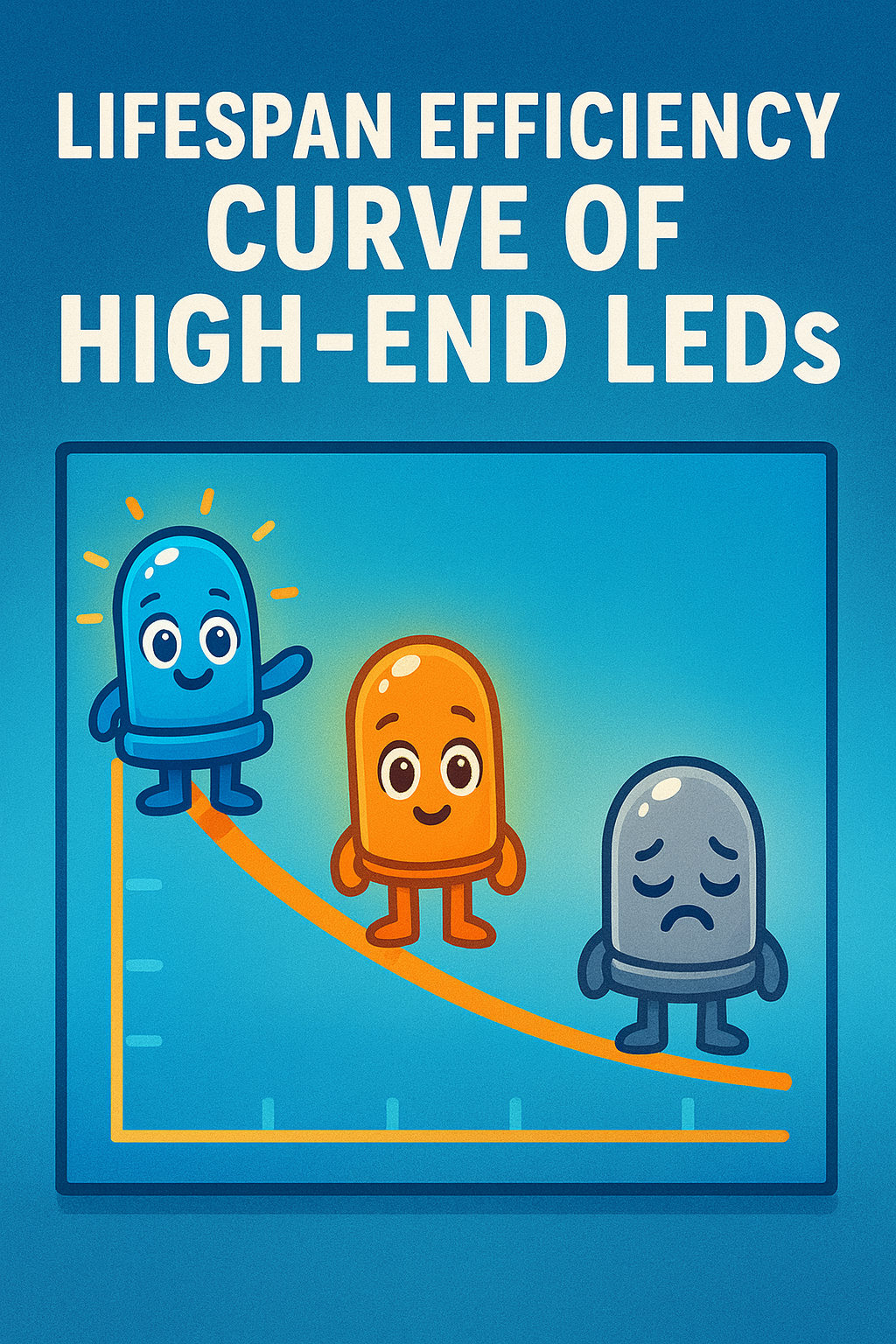Lifespan Efficiency Curve of High-End LEDs (PAR Output After 3+ Years)
💡 Lifespan Efficiency Curve of High-End LEDs (PAR Output After 3+ Years)
📉 1. How LEDs Age
- Unlike T5s (drop ~20–30% in a year) or metal halides (~20%/6 months), LEDs degrade slowly.
- Aging comes from:
- 🟦 Phosphor degradation (in white LEDs) → reduced PAR, color shift toward yellow/green.
- 🌡️ Thermal stress → lattice defects in diode → reduced photon output.
- 🟪 Short-wavelength LEDs (UV/violet, ~380–420 nm) degrade fastest.
- ⚡ Driver electronics → gradual inefficiency or power fluctuations → can alter current and shorten LED life.
🔬 2. Efficiency Curve (High-End Chips)
Measured as “L70” → the point when LED produces 70% of original output.
- Cree, Luxeon, Osram, Nichia (used in Ecotech, AI, Kessil, GHL, etc.):
- 50,000–60,000 hrs to L70 under proper cooling.
- That’s 13–15 years at 10 hrs/day.
- PAR degradation is not linear:
- 🟢 Very flat first 2–3 years (<5% loss).
- 🟡 Noticeable slope from ~5–7 years onward.
- 🔴 Rapid decline after ~10 years.
📊 3. Estimated PAR Output Retention Curve
Assuming quality fixture, good thermal design, ~10 hr/day usage:
| Years | Hours | PAR Output (vs. new) | Notes |
|---|---|---|---|
| 0 | 0 | 100% | Factory spec |
| 1 | ~3,650 | 98–99% | Negligible change |
| 3 | ~11,000 | 92–95% | Still excellent for reefs/plants |
| 5 | ~18,000 | 85–90% | Coral/plant growth may slow in high-demand systems |
| 7 | ~25,000 | 78–85% | May need PAR compensation (increase intensity) |
| 10 | ~36,500 | 70–80% | At L70 threshold; replacement/rebuild advisable |
| 12–15 | 45–55k | 55–70% | Output no longer adequate for light-hungry species |
🌊 4. What Happens After 3+ Years
- Reef Aquariums:
- Corals, especially SPS (Acropora, Montipora), are sensitive to small PAR changes.
- At ~3 years, a 5–8% PAR drop may not cause bleaching, but growth may slow.
- UV/violet channels may weaken sooner → subtle color/growth shifts.
- Planted Aquaria:
- 90–95% PAR is still fine for most plants.
- However, if the spectrum shifts toward yellow (phosphor degradation), plant morphology and red pigmentation may be affected.
🔥 5. Factors That Accelerate PAR Loss
- 🌡️ Heat: #1 killer. Every 10 °C rise halves LED life expectancy.
- ⚡ Overdriving: Running LEDs above recommended current boosts PAR short-term but dramatically reduces lifespan.
- 🧪 Salt creep & humidity: Salt fog etches lenses and reflectors → lowers photon transmission.
- 🟪 Violet/UV channels: Degrade 2–3× faster than blue/white channels.
- 📉 Driver electronics: Cheap drivers can flicker, run LEDs hotter, or lose efficiency.
🛠️ 6. How to Maximize PAR Lifespan
- ❄️ Maintain good cooling (clean fans, unobstructed vents, passive heatsinks).
- 🧽 Protect from salt spray (clean lenses, use splash guards).
- 🔋 Avoid running at 100% intensity continuously — many fixtures last longer when run at ~70–80% capacity.
- 🧪 Periodically measure PAR with a quantum meter — don’t rely on “still looks bright.”
- 🔄 Replace UV/violet channels sooner if fixture allows modular swaps.
📊 7. Real-World Data Points
- Ecotech Radion, AI Hydra, Kessil AP700:
- User PAR testing shows ~5% decline in 2–3 years at normal operating intensity.
- Public aquaria & coral farms:
- Typically budget for fixture replacement or diode swap at 7–10 years, not because they fail, but because PAR has declined into the 70–80% range.
✅ Final Takeaway
- High-end LEDs retain ~90–95% PAR even after 3 years.
- The efficiency curve is flat early → losses are small.
- After ~5 years, decline becomes noticeable (~85–90%).
- By 7–10 years, fixtures approach L70 threshold (~70–80%).
- Thermal management, spectrum (UV channels), and usage intensity determine how steep the curve is.

Impulsada por Lightspeed
Mostrar precios en:USD